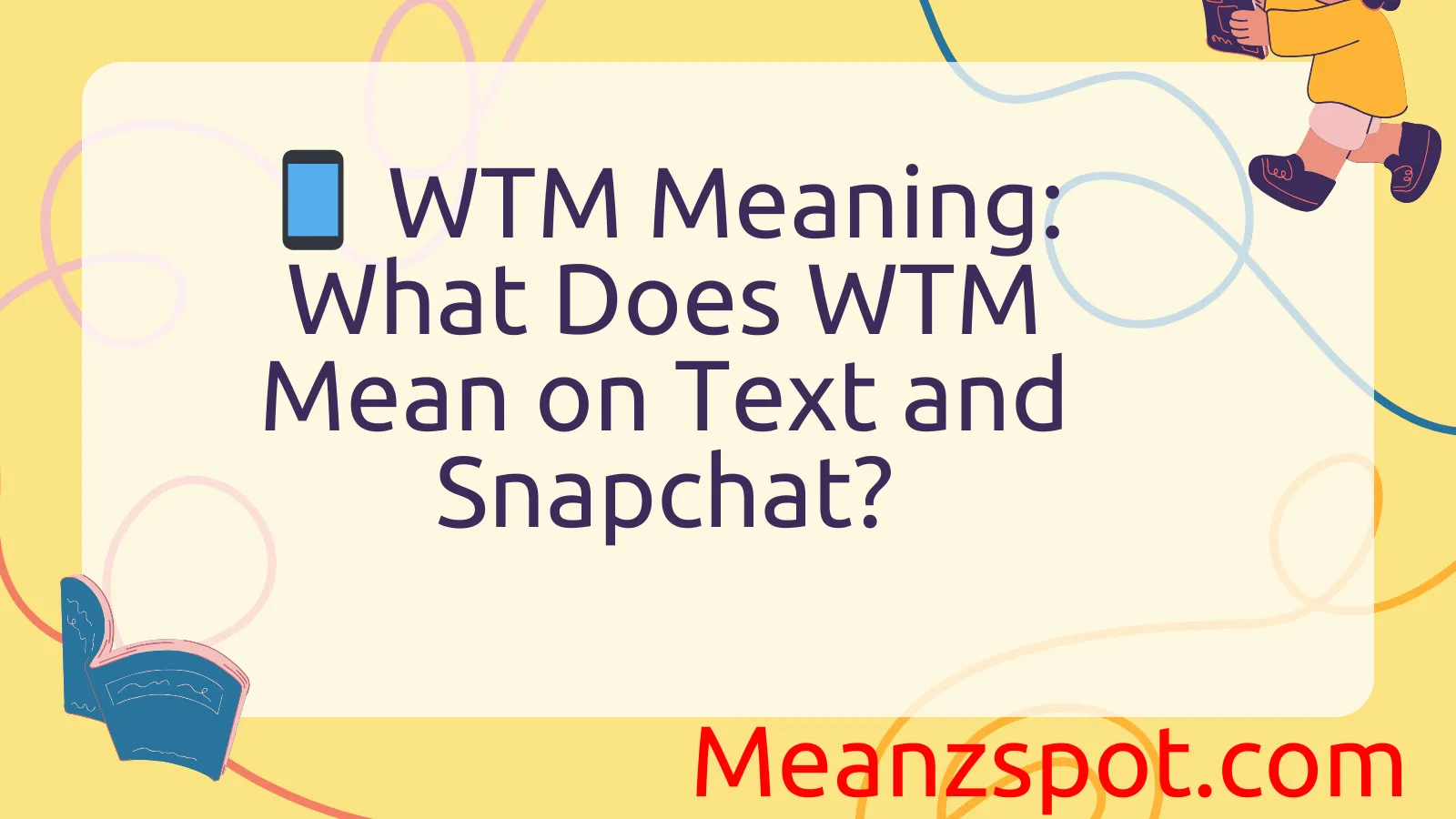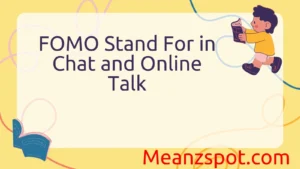In the fast-paced world of digital communication, acronyms and abbreviations dominate our messages, making conversations quicker but sometimes confusing. One such abbreviation that often pops up in text messages and social media platforms is “WTM.” If you’ve come across this term and found yourself scratching your head, you’re not alone. “WTM” is one of those versatile slang terms that can vary slightly in meaning depending on the context, tone, and platform.
Understanding abbreviations like WTM is essential for staying in tune with modern communication styles. Whether you’re texting a friend, responding to a Snapchat story, or scrolling through Instagram DMs, knowing what WTM means can help you engage more effectively and avoid misunderstandings. In this article, we’ll explore what WTM means, where it originated, how it’s used, and common misinterpretations—giving you a complete understanding of this popular slang term.
Definitions & Meaning
At its core, WTM is an abbreviation for “What’s the move?” This phrase is widely used in informal digital conversations to ask someone about their current plans or intentions. It’s a casual way of inquiring, “What are we doing?” or “What’s going on?”
For example:
- Text: “Hey, it’s Friday night. WTM?”
- Translation: “Do you have any plans tonight?”
In some cases, WTM might also be interpreted as:
- “What’s the matter?” – Asking if something is wrong.
- “Whatever that means” – Used sarcastically or dismissively (less common).
However, “What’s the move?” remains the most widely accepted and understood definition. It typically implies that the sender is ready to hang out, make plans, or engage in a spontaneous activity. The meaning often depends on the relationship between the people texting and the context in which it appears.
Origins & History
The phrase “What’s the move?” has been part of informal speech for years, especially within youth and urban communities. Its origins can be traced back to slang used in hip-hop culture and street vernacular, where planning social gatherings or spontaneous adventures often led to someone asking, “What’s the move?”
As texting and instant messaging became the norm, especially with the rise of smartphones and apps like iMessage, Snapchat, and Instagram, the abbreviation WTM emerged as a quicker, more efficient way to type the full phrase. Teenagers and young adults, always at the forefront of digital slang, popularized it.
By the mid-2010s, WTM had cemented itself as a staple in texting slang. Its rise is consistent with a broader trend of turning spoken expressions into acronyms—like “WYD” (What You Doing?), “HMU” (Hit Me Up), or “IDC” (I Don’t Care)—to keep conversations light and efficient in the fast-scrolling digital age.
Usage in Different Contexts
1. Social Media and Texting
WTM is most commonly seen in casual conversations on platforms like Snapchat, Instagram, and iMessage. It’s often used to initiate a plan or check in on someone’s availability. For instance:
- “WTM tonight?” — The sender is asking what your plans are for the evening.
2. In Group Chats
Among friends, WTM can be a conversation starter to coordinate hangouts or parties. It’s a way of asking, “Are we doing something, or should we make a plan?”
3. Dating and Flirting
WTM is often used as a flirty opener on dating apps or with romantic interests. It signals casual interest in spending time together:
- “Hey cutie, WTM later?” — Suggests they want to meet up or hang out.
4. Pop Culture
Rappers, influencers, and TikTokers often incorporate phrases like “WTM” in their content, further cementing its place in modern slang. Lyrics or captions using WTM add a laid-back or spontaneous tone.
5. Professional Settings
WTM is generally not used in professional environments. Its casual nature and ambiguity make it inappropriate for work emails or business communication. That said, it might occasionally appear in more relaxed startup or creative workspaces where informal texting is common.
Common Misunderstandings & Clarifications
Because WTM is an acronym with multiple potential meanings, it’s often misunderstood—especially across age groups or unfamiliar contexts.
1. Confusion with “What’s the matter?”
Someone might interpret WTM as a sign of concern rather than a plan-making question. For example:
- Text: “You okay? WTM?”
- Here, WTM might mean “What’s the matter?”—especially if the person seems upset.
2. Misreading Tone
WTM can come across as overly casual or even dismissive if misused. Without tone of voice or facial expressions, text can be misinterpreted.
3. Mistaking it for Other Slang
Some may confuse WTM with acronyms like WTD (What To Do?) or WTF (What The F***), especially when reading quickly.
To avoid confusion, always consider the context and the nature of the relationship. If in doubt, it’s okay to ask what someone means, especially if you’re not fluent in texting slang.
Alternatives & Synonyms
If you’re looking to mix up your language or prefer a different vibe, there are several alternatives to WTM that convey a similar message:
- WYD (What You Doing?) – Another common inquiry into someone’s plans.
- HMU (Hit Me Up) – A way of saying “Message me if you’re down to do something.”
- What’s up? – A traditional way of asking what someone is doing.
- Got plans? – More straightforward and clear.
- What’s going on? – Broader and less casual.
- What are you up to? – Friendly and widely understood.
Each of these alternatives offers a slightly different tone—some more flirty, some more inquisitive. WTM remains one of the more laid-back and trendy expressions among younger users.
Frequently Asked Questions (FAQ)
1. What does WTM stand for in texting?
WTM usually stands for “What’s the move?” meaning “What’s the plan?” or “What are we doing?”
2. Can WTM mean something else?
Yes, depending on context, it could also mean “What’s the matter?” or, less commonly, “Whatever that means.”
3. Is WTM a flirty message?
It can be, especially if sent to someone you’re interested in, like “WTM later?” as a subtle invitation.
4. Should I use WTM in professional conversations?
No, WTM is informal and best reserved for friends, peers, or casual conversations.
5. Is WTM still popular in 2025?
Yes, WTM continues to be a relevant slang term in texting and social media, especially among younger demographics.
6. What should I reply to WTM?
You can respond with your current plans, like “Just chilling, you?” or suggest something, like “Let’s grab food!”
7. Why do people abbreviate phrases like WTM?
For speed, convenience, and fitting messages into short formats like text or Snapchat replies.
Conclusion
Slang acronyms like WTM reflect how digital communication continues to evolve, adapting to our need for quick, casual interaction. Understanding WTM—primarily meaning “What’s the move?”—helps you stay in sync with friends, decode social messages, and engage in today’s fast-paced texting culture.
Whether it’s making weekend plans or simply keeping the conversation going, knowing how and when to use WTM makes you a more fluent digital communicator. As with all slang, context is key, and being aware of your audience ensures your messages are received the way you intend. So next time you see “WTM” pop up on your phone, you’ll know exactly what’s going on.



